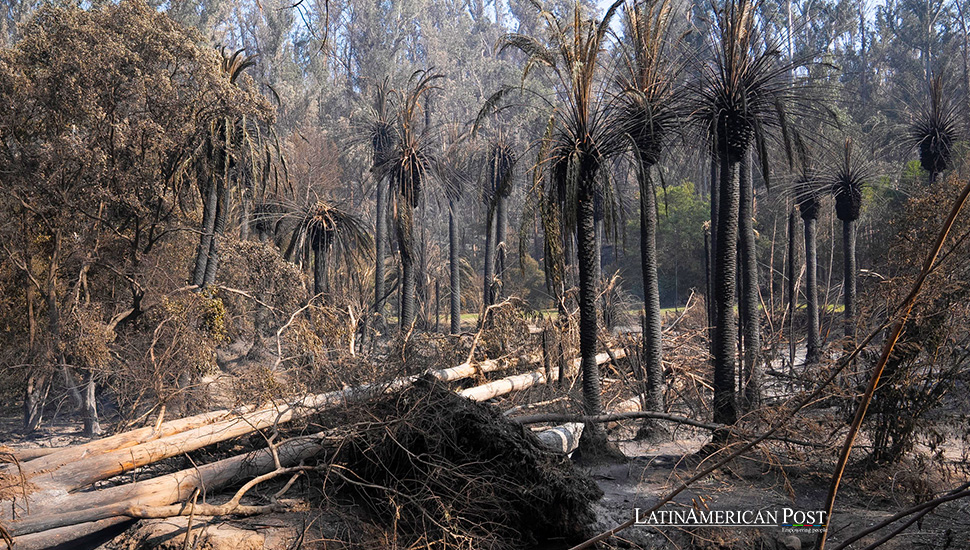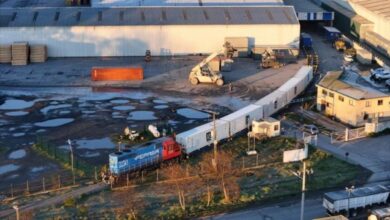Hundreds Still Missing as Chile’s Wildfires Ravage Communities Leaving Death and Desolation

Central Chile is grappling with the aftermath of devastating wildfires that have decimated neighborhoods, claiming 122 lives, leaving hundreds missing, and destroying thousands of homes, as volunteers and officials scramble to provide aid and manage the crisis.
Central Chile Grapples with Wildfire Aftermath
In the heart of central Chile, communities are facing the harrowing aftermath of wildfires that have left a trail of destruction, death, and despair. The fires, which ignited with ferocity on the eastern outskirts of Viña del Mar, have since Friday reduced entire neighborhoods to ashes, marking one of the deadliest natural disasters in the region’s history. As the death toll climbs to 122, with hundreds still missing, the scale of devastation becomes increasingly apparent, painting a grim picture of loss and resilience.
Viña del Mar, a city renowned for its picturesque beaches and vibrant resort life, now bears the scars of the calamity. The fires have ravaged the city and inflicted significant damage on the neighboring towns of Quilpé and Villa Alemana in the Valparaíso region. President Gabriel Boric, addressing the nation, revealed the staggering extent of the destruction, with at least 3,000 homes obliterated in the blaze.
As the flames recede, the task of recovery and rebuilding looms large. Volunteers, braving the smoldering ruins, have mobilized to clear the debris that once constituted the lives of many—a mixture of charred metal, shattered glass, and remnants of daily existence now lies scattered across the affected areas. Their efforts, though monumental, are but the initial steps toward healing the wounds inflicted by the fires.
Tragedy Compounded by Identification Challenges
The challenge of identification adds another layer of anguish to the tragedy. The Forensic Medical Service of Chile faces the daunting task of identifying victims, many beyond recognition, relying on genetic material from those who have reported missing relatives. This painstaking process underscores the personal tragedies nested within the broader disaster, each unidentified victim a story of unresolved grief for their families.
Amidst this backdrop of loss, the community’s spirit of solidarity shines brightly. Schools and public buildings in Viña del Mar and Santiago have transformed into hubs of generosity, collecting essential supplies for the victims. Water, food, candles, and shovels—each donation is a testament to the collective resolve to support those who have lost everything.
Calls for Sustainable Urban Planning
Yet, the crisis has also exposed vulnerabilities, particularly in Viña del Mar, where Mayor Macarena Ripamonti reported at least 370 missing individuals in a city of about 300,000. The fires preyed upon neighborhoods precariously perched on the city’s surrounding mountains, highlighting the risks faced by communities built in harm’s way. This disaster prompts a reckoning with the need for sustainable urban planning and disaster preparedness in the face of escalating climate risks.
In the immediate aftermath, the concern for safety and security has prompted police in Viña del Mar, Villa Alemana, and Quilpé to advise unaffected residents to remain indoors, ensuring rescue and recovery crews can operate unimpeded. However, the fear of looters has driven many who lost their homes to guard the ruins of their possessions, a stark reminder of the desperation and vulnerability that follow such catastrophic events.
This tragedy transcends the immediate physical destruction, touching on deeper environmental management issues, urban resilience, and the human cost of natural disasters. As Chile mourns the loss of lives and homes, the wildfires serve as a dire warning of the urgent need for comprehensive strategies to mitigate the impact of such disasters in the future. The community’s response, marked by an outpouring of support and solidarity, offers a glimmer of hope amid the devastation, showcasing the indomitable human spirit in the face of adversity.
Rebuilding Lives Beyond Structures
However, as recovery efforts continue, questions linger about the long-term implications of this disaster on the affected communities and the broader region. The rebuilding process will not only entail the physical reconstruction of homes and infrastructure but also the healing of emotional scars left by the loss and trauma experienced by so many.
Also read: Chile’s Fiery Despair: A Tale of Destruction, Neglect, and Resilience Amid Wildfires
The wildfires in central Chile are a stark reminder of the fragility of human life and the relentless power of nature. As the nation grapples with the aftermath, the path to recovery will require immediate relief efforts and a sustained commitment to rebuilding more robust, more resilient communities.
This tragedy underscores the importance of collective action, environmental stewardship, and preparedness in the face of natural disasters, challenging us to reflect on our relationship with the natural world and our responsibility to protect and support each other in times of crisis.




